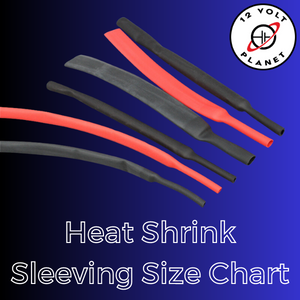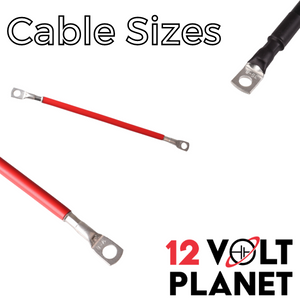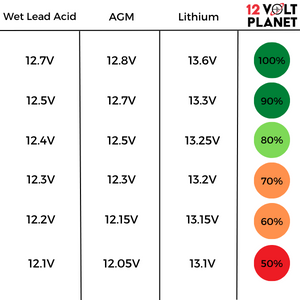Calculators & Tables FAQs
| Q | What size cables do I need to use in my electrical installation? |
| A | The size of the cable is determined by the amount of current going through the cable and the cable's run length. The easiest way to work the cable size out is by using our Voltage Drop Calculator. |
| Q | What size heat shrink sleeving will fit my cable? |
| A | We have made a chart showing which size heat shrink sleeving can be used for each cable size. |
| Q | What size fuse do I need to use? |
| A | The fuse needs to be rated above the current that is going through the cable and below the cable's overall rating. For example, if you had a 5A load going through 21A cable, you could use a fuse between 7.5-15A. |
| Knowledge Centre Guides | Article Link |
|---|---|
Voltage Drop CalculatorWe've developed this handy calculator which will show you the approximate voltage drop based on cable size, supply voltage, current draw and cable length. | |
Cable Size TablesQuick reference tables showing cable sizes in metric cross sectional area (CSA) and the equivalent American Wire Gauge (AWG), plus the maximum overall diameter of a selection of our most popular cables. Useful in helping you determine what size cable you have and matching it with products from our website. |
Featured News Articles
| 12 July 2023  Are you struggling to work out what size heat shrink sleeving you need for your cables? Now we have a chart for working it out, so click here to take a look. Posted in Help & Advice |
| 4 May 2023  We often get asked questions about our cable so in this article, we are looking at the sizes, thicknesses and amperage ratings of the different cables that we stock. Posted in Help & Advice |
| 21 March 2023  Have you ever wondered how to use your multimeter to estimate the State of Charge (SoC) of your battery? Read this article to find out how to do this in the most accurate way possible. |
Disclaimer - The information contained in these articles is provided in good faith and we do our best to ensure that it is accurate and up to date, however, we cannot be held responsible for any damage or loss arising from the use or mis-use of this information or from any errors or omissions. The installer is ultimately responsible for the safety of the system so if you are in any doubt, please consult a qualified electrician.
